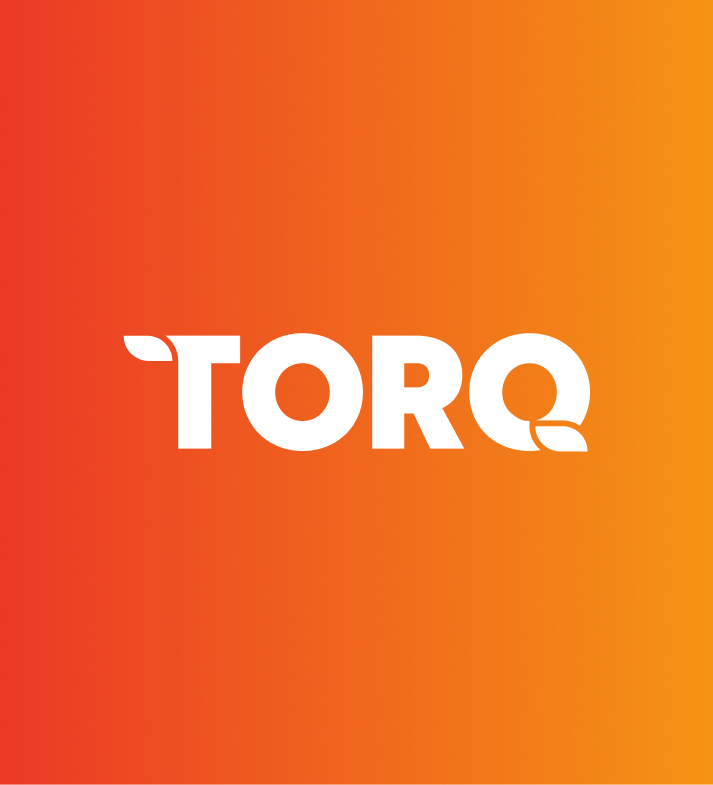Brand identity agency
Brand identity refers to the visual and emotional representation of a brand’s values, personality and characteristics. A rebrand or brand refresh ensures a unified and professional appearance that builds user trust and loyalty, aligns a brand’s messaging with its values, and ultimately leads to higher engagement and conversions.
Introduction to brand identity
Rebranding is a strategic decision that should be carefully considered. Therefore, it’s crucial to distinguish whether an organisation desires a brand, a rebrand, or a brand refresh. The latter may have varying requirements, while the former two follow a similar process, which includes establishing a logo, a colour palette, typography, etc. While a rebrand calls for a new identity for a business, which may include a revised name, slogan, visual identity or brand values, a brand refresh entails changes to an existing colour palette, logo or font style to keep the visual identity fresh, up-to-date and appealing.
What is brand identity, and why is it important?
Brand identity, in essence, comprises a spectrum of design components such as colours, typography, imagery, logos, and visual styles. It is the amalgamation of these elements that serves as the visual representation of a brand’s essence. This identity is crucial as it permeates through every interaction point of a digital product, shaping how the brand is perceived by its audience. From the logo displayed on a website to the colour scheme used in marketing materials, each element contributes to building a cohesive and memorable brand image. Therefore, meticulously considering and crafting these elements ensures consistency and reinforces the brand’s identity, ultimately fostering recognition, trust, and loyalty among consumers.
The role of brand identity
Establishing a strong brand identity is crucial for businesses because it goes beyond just a memorable logo or a catchy tagline. It encompasses the entire essence of what the brand represents, including its values, personality, and the overall experience it offers to users. When a brand consistently presents itself in a coherent and recognisable manner across various platforms and interactions, it enables users to develop a deep and meaningful connection with the brand.
Benefits of rebranding or a brand refresh
A well-designed brand identity system maintains a coherent look and feel, creates the perception of a trustworthy and reliable organisation and increases the likelihood of users recalling and recommending the website to others.
- Increased relevance: Keeps the brand current and relevant to changing market trends and consumer preferences.
- Improved perception: Enhances public perception and can help overcome previous negative associations with the brand.
- Engagement: Reinvigorates interest from existing customers and stakeholders, leading to renewed engagement.
- Differentiation: Helps differentiate the brand from competitors by highlighting new features, values, or innovations.
- Reinforced positioning: Strengthens market positioning by clearly communicating what the brand stands for and its unique selling propositions.
- Invigorated company culture: Can energise and motivate employees by providing them with a new sense of purpose and identity.

Brand element prepared for Torq. Torq provides responsibly sourced agricultural products and natural resources from Asia and Africa to consumers around the world, using deep local expertise and global experience.

Visual identity refinement for Centre for Academic English. The Centre for Academic English (CfAE) at Imperial College needed a brand refresh after nine years with the same visual identity. Our challenge was to update the existing cog motif, which symbolized the neural process of thinking and CfAE’s role in education, without completely reinventing it. After workshops with stakeholders, our team introduced a new ring motif that retained the essence of the cogs but added versatility and playfulness, allowing for broader application and interpretation. This refresh, which included clever wordplay on merchandise and a strong digital presence, effectively increased CfAE’s visibility across Imperial’s campuses while maintaining its unique identity within the university’s overall branding.
Supporting your users' needs
Builds emotional connection
Creates long-term value
Differentiates from competitors
The stages of establishing a brand identity
Stage 1: Discovery: Initially, at Make it Clear, we aim to gather all the details that are currently in place. We will conduct interviews, surveys, and market analysis. This discovery stage aims to understand the organisation from both internal and external perspectives. We aim to uncover insights that will inform the subsequent stages of our brand identity project, ensuring that our strategies align with the organisation’s goals and aspirations.
Stage 2: Audit current materials: Rebrands and brand refresh benefit from an audit and review of existing brand elements at this stage. This can help update any existing market segmentation to include any new audiences. It can also shed light on any potential negative perceptions that need to be counteracted as part of the brand updates. This can involve social media listening, surveys, focus groups and data from any loyalty programs.
Stage 3: Workshop: During our workshop with you, we will collaboratively define the direction, goals, and aims for your brand. This session also provides an opportunity to review the materials you’ve supplied to ensure we have a comprehensive understanding of your brand landscape. Our goal is to ascertain your preferences regarding core brand elements, such as preferred or disliked colours, styles, fonts, illustrations, graphics, photo treatments, and photographic styles, among other relevant aspects. If you’re unsure about these preferences, we can utilise mood boards to gather more information and help you visualise various options.
Stage 4: Creative: At this stage, our focus is on establishing the visual direction of your new brand. We begin by presenting concepts for the core brand elements. Typically, we offer three conceptual directions to provide you with a diverse selection to consider. After reviewing these concepts, we aim for a clearer direction on how to proceed. Ideally, we prefer to review feedback in person or via a call involving all key stakeholders. Additionally, the initial deck will showcase identities in black and white, allowing you to evaluate the design without the distraction of colour. This ensures a thorough and insightful evaluation of the proposed designs.
Stage 5: Create brand guidelines: In our branding projects, we document the brand personality through comprehensive guides tailored to your specific needs. While not all elements may be included in every case, a light brand style guide is typically the minimum documentation provided. This guide covers essential aspects such as logo usage, colours, typography, and, if applicable, icons/illustrations. Additionally, we may include other key documents such as core brand or company values, guidelines for tone of voice, and a brand manifesto. These guides serve as valuable resources to ensure consistency and cohesion in your brand representation across various channels and touchpoints.
Stage 6: Implementation and rollout: This stage includes the rollout of the new brand identity across all relevant touchpoints, including digital platforms, print materials, physical spaces, and marketing communications.
Brand identity in the digital age
In today’s digital landscape, adopting a digital-first approach in brand identity design is crucial for success. Companies must ensure that their brand identity is not only vibrant and appealing but also consistent across all digital platforms. This requires meticulous planning and the implementation of strategic measures to maintain uniformity and clarity in how the brand is perceived online.
Key strategies for ensuring brand consistency include developing a comprehensive brand style guide that details the visual elements, messaging, and tone of voice to be used. It’s essential to implement uniform visual elements across all platforms and standardise content formats and templates to reinforce brand recognition. Consistent user experience (UX) design across all digital interfaces ensures that customers have a seamless interaction with the brand, enhancing satisfaction and loyalty.
Moreover, aligning social media profiles and ensuring all posts reflect the brand identity are fundamental steps. Regular audits of digital assets help maintain brand alignment, while training team members on brand guidelines ensure everyone represents the brand accurately. Utilising brand management software can streamline these efforts.
Further strategies involve monitoring and responding consistently to brand mentions, coordinating marketing campaigns across various channels, leveraging consistent hashtags and keywords, and maintaining a unified brand narrative. It’s also vital to adapt content to fit platform-specific nuances without diluting the brand essence. Lastly, regularly updating digital platforms to reflect any evolutions in the brand ensures that the brand identity remains dynamic and current. These practices not only reinforce the brand’s presence but also foster trust and recognition among consumers in the digital age.
The psychology of brand identity
The psychology behind brand identity plays a crucial role in shaping consumer perception and behaviour. Elements such as colour, shape, and typography are not merely aesthetic choices; they convey emotions and associations that can significantly influence how a brand is perceived. For instance, colour can evoke specific feelings or convey messages (red for excitement, blue for trust), shapes can imply stability (squares) or innovation (irregular shapes), and typography can enhance readability and evoke nostalgia or modernity. By applying these psychological principles, companies can create more impactful brand identities that resonate deeply with consumers, driving engagement and loyalty.
Future trends in brand identity
Looking ahead, brand identity will continue to evolve in response to emerging trends and changing consumer expectations. Increased personalisation and customisation will become even more significant as brands strive to meet individual customer needs. Authenticity and transparency will be paramount in building trust, especially as consumers become more discerning about the brands they support. Technological advancements, such as augmented reality (AR) and virtual reality (VR), will offer new ways for brands to create immersive and interactive experiences.
Sustainable and eco-friendly branding will address consumers’ growing concerns about environmental impact. As society becomes more inclusive, diverse representation in branding will be crucial to connect with broader audiences. Additionally, digital-first strategies will dominate, driven by the continued rise of online interactions. Dynamic logos, minimalist designs, and voice and sonic branding will cater to digital and mobile-first consumers, while AI and blockchain technology will play increasing roles in personalising experiences and ensuring brand trust. Overall, the future of brand identity looks to be a blend of technological innovation, social responsibility, and deep psychological engagement.
What’s included
Depending on project requirements, a light brand style guide (covering logo usage, colours, typography and icons/illustrations if applicable) is the usual minimum documentation supplied in branding projects.
Why choose Make it Clear
At Make it Clear, we take an evidence-based approach to everything we do. Understanding your organisation, audiences, and the context in which they interact is paramount to the way we work and deliver a best-in-class user experience.




